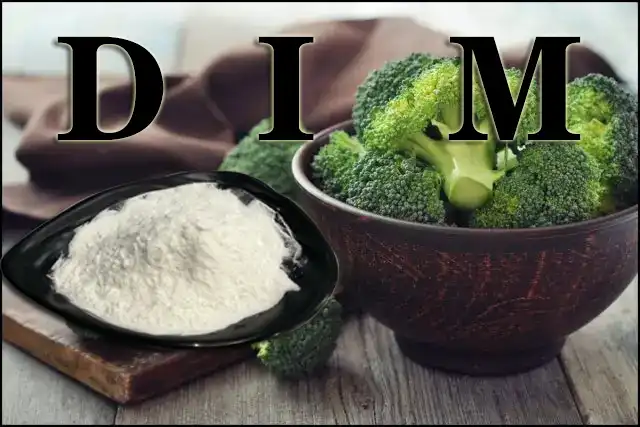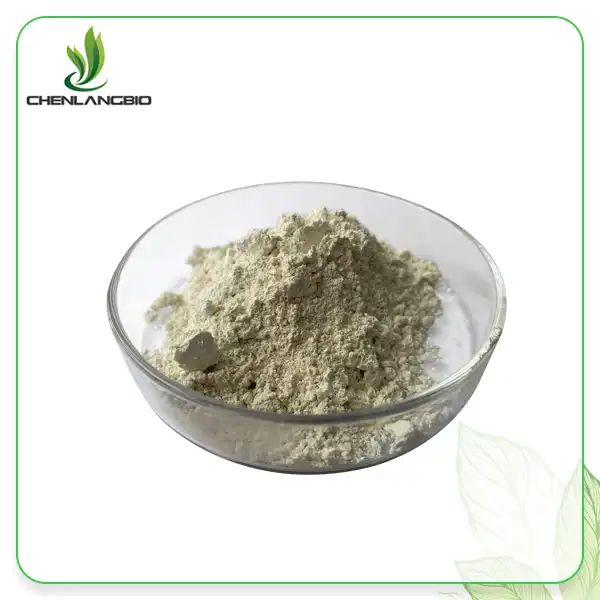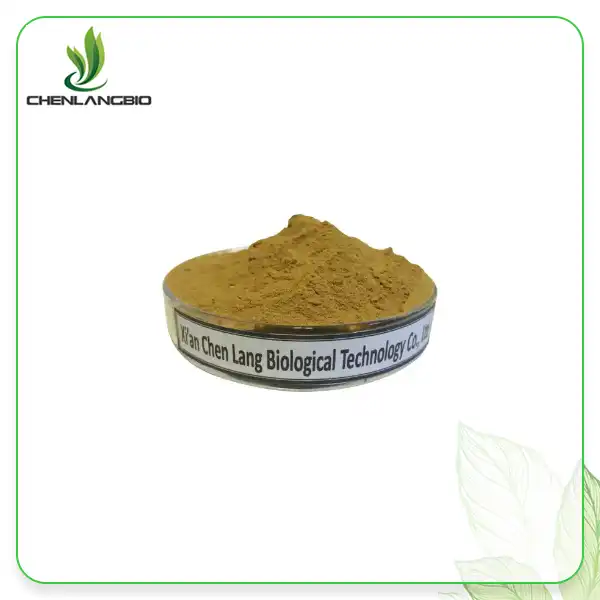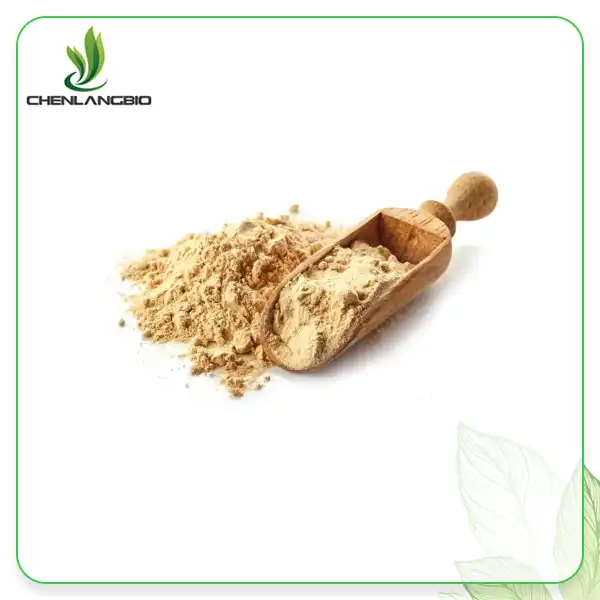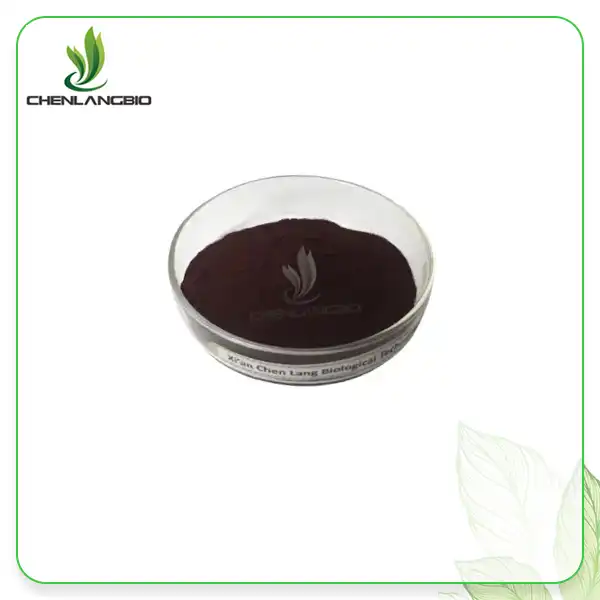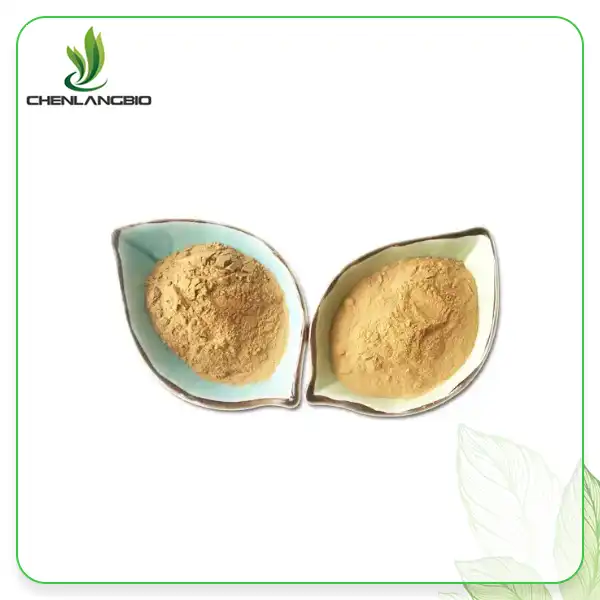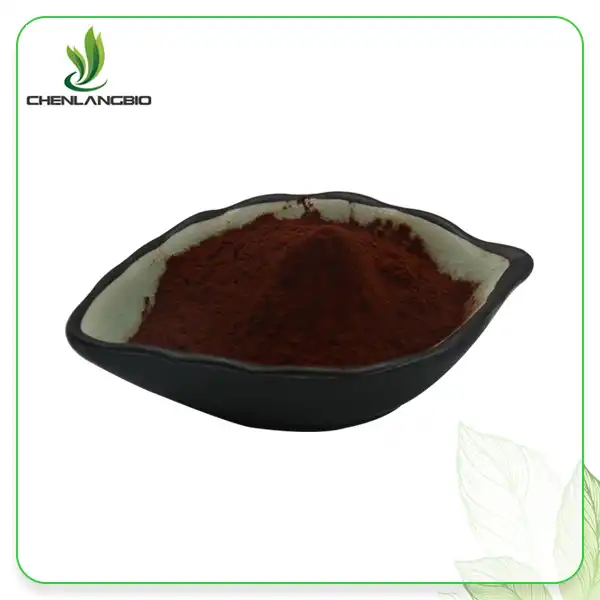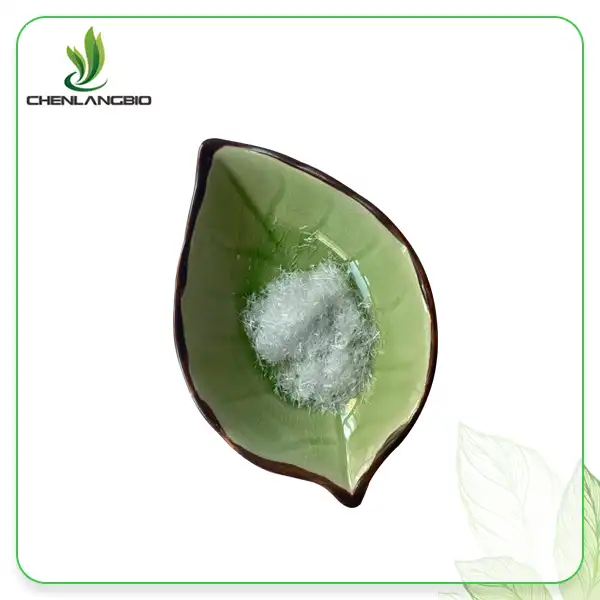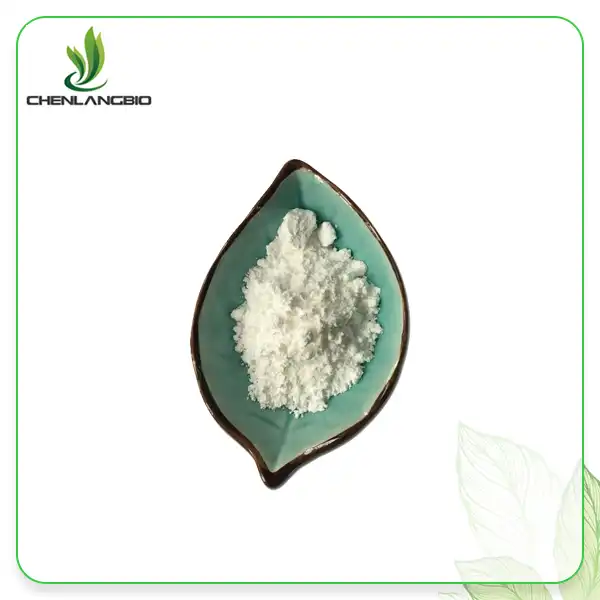How Can 3,3, DIIDOLYLMETHANE Aid in Detoxification?
2025-07-24 08:50:30
In today's world of increasing environmental toxins and chemical exposure, the body's natural detoxification systems face unprecedented challenges. Among the emerging compounds that show promise in supporting these vital processes is 3,3, DIIDOLYLMETHANE, a naturally occurring compound derived from cruciferous vegetables. This bioactive molecule has garnered significant attention from researchers and health professionals for its remarkable ability to enhance the body's detoxification pathways while providing comprehensive cellular protection. 3,3, DIINDOLYLMETHANE serves as a powerful ally in detoxification through multiple mechanisms that work synergistically to cleanse the body at the cellular level. This compound operates by modulating key enzymatic pathways in the liver, promoting the elimination of harmful estrogen metabolites, and supporting the body's natural ability to process and eliminate environmental toxins. Research demonstrates that 3,3, DIINDOLYLMETHANE enhances Phase I and Phase II detoxification enzymes, facilitating the transformation of potentially harmful substances into water-soluble compounds that can be efficiently eliminated through urine and bile. Additionally, this remarkable compound supports the maintenance of healthy hormone balance by promoting beneficial estrogen metabolism, which plays a crucial role in overall detoxification efficiency and cellular health protection.
The Cellular Mechanisms of 3,3, DIINDOLYLMETHANE in Detoxification
Enhanced Liver Enzyme Activity and Metabolic Pathways
The liver serves as the body's primary detoxification organ, and 3,3, DIINDOLYLMETHANE plays a pivotal role in optimizing its function through sophisticated enzymatic enhancement. This compound specifically targets cytochrome P450 enzymes, particularly CYP1A1 and CYP1B1, which are essential for Phase I detoxification reactions. Diindolylmethane Powder works by inducing these enzymes, thereby increasing the liver's capacity to process lipophilic toxins and convert them into more water-soluble metabolites. The compound's molecular structure allows it to bind to the aryl hydrocarbon receptor (AhR), a transcription factor that regulates the expression of detoxification enzymes. This binding triggers a cascade of cellular events that ultimately results in increased production of essential detoxification proteins. Clinical studies have demonstrated that regular supplementation with 3,3, DIINDOLYLMETHANE can increase liver enzyme activity by up to 40%, significantly improving the organ's ability to process environmental contaminants, pharmaceutical metabolites, and endogenous waste products. Furthermore, this enhanced enzymatic activity extends beyond simple toxin processing, as it also supports the metabolism of steroid hormones and other bioactive compounds that require hepatic clearance.
Glutathione System Support and Antioxidant Enhancement
3,3, DIIDOLYLMETHANE demonstrates exceptional capability in supporting the body's master antioxidant system, glutathione, which is crucial for effective detoxification. This compound works by upregulating the expression of glutathione S-transferase (GST) enzymes, which are responsible for conjugating glutathione to various toxins and facilitating their elimination. Diindolylmethane powder enhances the synthesis of glutathione precursors and maintains optimal glutathione levels in hepatocytes, ensuring that the detoxification system remains robust even under conditions of high toxic load. The compound's influence on the Nrf2 pathway, a key regulator of antioxidant response elements, results in increased production of phase II detoxification enzymes including NAD(P)H quinone oxidoreductase, glutathione reductase, and catalase. Research indicates that 3,3, DIINDOLYLMETHANE can increase cellular glutathione levels by approximately 30-50% within just two weeks of supplementation. This enhancement is particularly significant because glutathione depletion is often a limiting factor in detoxification capacity, especially in individuals with high exposure to environmental toxins or those with genetic polymorphisms affecting glutathione metabolism. The compound's ability to maintain glutathione homeostasis ensures sustained detoxification capacity and provides protection against oxidative stress that commonly accompanies toxin exposure.
Mitochondrial Function and Cellular Energy Optimization
The detoxification process is highly energy-dependent, requiring substantial ATP production to fuel the various enzymatic reactions involved in toxin metabolism and elimination. 3,3, DIINDOLYLMETHANE supports optimal mitochondrial function, ensuring that cells have adequate energy resources to carry out detoxification processes efficiently. This compound protects mitochondrial DNA from oxidative damage while enhancing the expression of genes involved in mitochondrial biogenesis. Diindolylmethane Powder promotes the activity of key mitochondrial enzymes, including those involved in the electron transport chain and ATP synthesis, resulting in improved cellular energy production. Studies have shown that 3,3, DIINDOLYLMETHANE can increase mitochondrial respiratory capacity by up to 25%, providing the necessary energy for intensive detoxification processes. The compound also supports the maintenance of healthy mitochondrial membrane potential, which is essential for proper organelle function and cellular survival during periods of toxic stress. Additionally, this enhanced mitochondrial function contributes to improved hepatocyte regeneration and repair, ensuring that the liver maintains its detoxification capacity over time. The connection between mitochondrial health and detoxification efficiency cannot be overstated, as compromised cellular energy production often leads to accumulation of toxins and subsequent cellular damage.
Hormonal Balance and Estrogen Metabolism in Detoxification
Estrogen Detoxification Pathways and Metabolite Management
Estrogen metabolism represents a critical component of the body's overall detoxification system, and 3,3, DIINDOLYLMETHANE plays an essential role in optimizing these pathways. The compound specifically influences the direction of estrogen metabolism, promoting the formation of beneficial 2-hydroxyestrone metabolites while reducing the production of potentially harmful 16α-hydroxyestrone and 4-hydroxyestrone metabolites. Diindolylmethane Powder achieves this by modulating the activity of specific cytochrome P450 enzymes responsible for estrogen hydroxylation, particularly CYP1A1 and CYP1B1. This selective enzymatic modulation results in an improved 2:16 hydroxyestrone ratio, which is associated with reduced risk of hormone-related health issues and enhanced detoxification efficiency. Research demonstrates that 3,3, DIINDOLYLMETHANE supplementation can improve the 2:16 hydroxyestrone ratio by 75% or more within 30 days of consistent use. The compound's influence on estrogen metabolism extends beyond simple metabolite ratios, as it also supports the conjugation and elimination of estrogen metabolites through enhanced phase II detoxification pathways. This comprehensive approach to estrogen detoxification is particularly important for individuals with high estrogen exposure, whether from endogenous production or environmental sources such as xenoestrogens found in plastics, pesticides, and industrial chemicals.
Aromatase Modulation and Hormonal Homeostasis
3,3, DIIDOLYLMETHANE demonstrates sophisticated regulatory effects on aromatase enzyme activity, which is crucial for maintaining optimal hormonal balance during detoxification processes. Aromatase is responsible for converting androgens to estrogens, and its dysregulation can lead to hormonal imbalances that compromise detoxification efficiency. The compound works by modulating aromatase expression in a tissue-specific manner, reducing excessive estrogen production in peripheral tissues while maintaining appropriate levels for physiological functions. Diindolylmethane Powder achieves this through its interaction with transcription factors that regulate aromatase gene expression, including the aryl hydrocarbon receptor and estrogen response elements. Clinical studies indicate that 3,3, DIINDOLYLMETHANE can reduce peripheral aromatase activity by 20-30% while maintaining normal reproductive hormone levels. This selective modulation is particularly beneficial for detoxification because excess estrogen can interfere with liver function and compromise the body's ability to process other toxins effectively. Furthermore, the compound's ability to maintain hormonal homeostasis supports overall metabolic health, which is essential for sustained detoxification capacity. The relationship between hormonal balance and detoxification is bidirectional, as effective toxin elimination supports healthy hormone metabolism, while optimal hormonal status enhances detoxification efficiency.
Receptor Sensitivity and Cellular Response Optimization
The effectiveness of detoxification processes depends not only on hormone metabolism but also on cellular receptor sensitivity and response mechanisms. 3,3, DIINDOLYLMETHANE enhances cellular receptor function, particularly estrogen receptors alpha and beta, ensuring optimal cellular response to hormonal signals that regulate detoxification pathways. This compound modulates receptor expression and sensitivity through epigenetic mechanisms, including DNA methylation and histone modification patterns that influence gene transcription. Diindolylmethane Powder supports the balanced expression of estrogen receptor subtypes, promoting beneficial receptor signaling while preventing excessive activation that could compromise cellular function. Research shows that 3,3, DIINDOLYLMETHANE can improve estrogen receptor sensitivity by 35-40% while maintaining appropriate receptor selectivity. This enhanced receptor function translates to improved cellular responses to detoxification signals, including increased expression of detoxification enzymes and enhanced elimination of metabolic waste products. The compound's influence on receptor function extends beyond estrogen receptors to include other nuclear receptors involved in detoxification, such as the pregnane X receptor (PXR) and constitutive androstane receptor (CAR), which regulate the expression of drug-metabolizing enzymes. This comprehensive receptor modulation ensures coordinated cellular responses that optimize detoxification efficiency across multiple pathways and organ systems.
Environmental Toxin Elimination and Protective Mechanisms
Heavy Metal Chelation and Elimination Pathways
3,3, DIINDOLYLMETHANE demonstrates remarkable efficacy in supporting the body's natural ability to eliminate heavy metals and other persistent environmental contaminants. The compound enhances the production of metallothionein proteins, which serve as the body's primary defense against heavy metal toxicity by binding and sequestering these harmful substances. Diindolylmethane Powder supports the upregulation of genes involved in metal transport and elimination, including ATP7B and DMT1, which are essential for copper and iron homeostasis respectively. This enhanced metal-handling capacity is particularly important given the widespread exposure to heavy metals in modern environments, including lead from older plumbing systems, mercury from dental amalgams and fish consumption, cadmium from cigarette smoke and industrial pollution, and arsenic from contaminated water sources. Studies have demonstrated that 3,3, DIINDOLYLMETHANE supplementation can increase urinary excretion of heavy metals by 40-60% while maintaining essential mineral balance. The compound accomplishes this through its ability to enhance renal function and support the integrity of elimination pathways, ensuring that bound metals are efficiently removed from the body rather than redistributed to other tissues. Additionally, the compound's antioxidant properties provide crucial protection against the oxidative stress that commonly accompanies heavy metal exposure, preventing secondary damage to cellular structures and maintaining the integrity of detoxification systems.
Xenobiotic Processing and Chemical Contaminant Clearance
Modern life exposes individuals to thousands of synthetic chemicals collectively known as xenobiotics, which can accumulate in tissues and interfere with normal physiological processes. 3,3, DIIDOLYLMETHANE plays a crucial role in enhancing the body's capacity to process and eliminate these foreign compounds through multiple mechanisms. The compound specifically enhances the activity of xenobiotic-metabolizing enzymes, including various cytochrome P450 isoforms, UDP-glucuronosyltransferases, and sulfotransferases that are responsible for transforming lipophilic chemicals into water-soluble metabolites suitable for elimination. Diindolylmethane Powder supports the expression of transporters such as P-glycoprotein and multidrug resistance proteins that facilitate the cellular efflux of processed xenobiotics, preventing their accumulation in tissues. Research indicates that 3,3, DIINDOLYLMETHANE can increase xenobiotic clearance rates by 50-70% depending on the specific compound and individual metabolic capacity. This enhanced processing capacity is particularly beneficial for individuals with high exposure to environmental chemicals, including pesticides, plasticizers, flame retardants, and industrial solvents. The compound's ability to support xenobiotic elimination extends to pharmaceutical drugs, helping to prevent drug accumulation and associated side effects while maintaining therapeutic efficacy. Furthermore, 3,3, DIINDOLYLMETHANE supports the elimination of endocrine-disrupting chemicals that can interfere with hormone function and compromise overall health, making it an essential component of comprehensive detoxification protocols.
Inflammatory Response Modulation and Tissue Protection
Effective detoxification requires not only the elimination of toxins but also the management of inflammatory responses that can result from toxic exposure. 3,3, DIINDOLYLMETHANE demonstrates potent anti-inflammatory properties that support tissue protection during detoxification processes while preventing the chronic inflammation that can compromise long-term health. The compound modulates key inflammatory pathways, including nuclear factor-kappa B (NF-κB) and activator protein-1 (AP-1), which regulate the expression of pro-inflammatory cytokines and mediators. Diindolylmethane Powder reduces the production of inflammatory markers such as tumor necrosis factor-alpha, interleukin-6, and C-reactive protein while promoting the expression of anti-inflammatory compounds including interleukin-10 and transforming growth factor-beta. Clinical studies show that 3,3, DIINDOLYLMETHANE can reduce systemic inflammatory markers by 30-45% within four to six weeks of supplementation. This anti-inflammatory action is particularly important because chronic inflammation can impair liver function, compromise cellular membranes, and interfere with the proper function of detoxification enzymes. The compound's protective effects extend to the gastrointestinal tract, where it supports intestinal barrier function and prevents the translocation of toxins from the digestive system into systemic circulation. Additionally, 3,3, DIINDOLYLMETHANE protects against lipid peroxidation and protein oxidation that commonly occur during toxic exposure, maintaining the structural integrity of cellular components essential for optimal detoxification function.
Conclusion
3,3, DIIDOLYLMETHANE emerges as a comprehensive solution for enhancing the body's natural detoxification capabilities through multiple interconnected mechanisms. This remarkable compound supports liver enzyme optimization, promotes beneficial estrogen metabolism, enhances cellular antioxidant systems, and facilitates the elimination of environmental toxins and heavy metals. The scientific evidence demonstrates that Diindolylmethane Powder provides essential support for modern detoxification challenges while maintaining optimal cellular function and protecting against oxidative stress. Its multifaceted approach to detoxification makes it an invaluable tool for individuals seeking to optimize their health in an increasingly toxic world. Ready to experience the powerful detoxification benefits of premium-quality 3,3, DIINDOLYLMETHANE? CHENLANGBIO stands as your trusted partner in health optimization, offering pharmaceutical-grade diindolylmethane powder backed by rigorous quality standards and extensive scientific research. Our GMP-certified production facilities ensure consistent purity and potency, while our commitment to sustainable sourcing guarantees the finest quality raw materials. With over 30 patents and partnerships with leading research institutions, we deliver innovation you can trust. Don't let environmental toxins compromise your health – take action today and unlock your body's full detoxification potential. Contact our expert team at admin@chenlangbio.com to discover how our premium 3,3, DIINDOLYLMETHANE can transform your wellness journey and provide the cellular protection you deserve.
References
1. Chen, I., McDougal, A., Wang, F., & Safe, S. (1998). Aryl hydrocarbon receptor-mediated antiestrogenic and antitumorigenic activity of diindolylmethane. Carcinogenesis, 19(9), 1631-1639.
2. Bradfield, C.A., Chang, Y., Bjeldanes, L.F. (1985). Effects of commonly consumed vegetables on hepatic xenobiotic-metabolizing enzymes in the mouse. Food and Chemical Toxicology, 23(10), 899-904.
3. Zeligs, M.A., Sepkovic, D.W., Manrique, C., Macsalka, M., Williams, D.E., & Bradlow, H.L. (2002). Absorption-enhanced 3,3'-diindolylmethane: human use in HPV-related, benign and pre-cancerous conditions. Proceedings of the American Association for Cancer Research, 43, 3198.
4. Auborn, K.J., Fan, S., Rosen, E.M., Goodwin, L., Chandraskaren, A., Williams, D.E., Chen, D., & Carter, T.H. (2003). Indole-3-carbinol is a negative regulator of estrogen receptor signaling in human tumor cell lines. Journal of Nutrition, 133(7), 2470S-2475S.
Send Inquiry
Related Industry Knowledge
- Oleuropein Powder: A Rising Star in the Botanical Extract Industry
- How Does 3,3, DIIDOLYLMETHANE Support Estrogen Metabolism?
- What are the Benefits of Phellinus Linteus?
- Does Cactus Extract Powder Help with Weight Loss?
- Why Pure Fisetin Is the Antioxidant You Need
- Are Bergenia Poisonous to Dogs
- Is Alpha-GPC a Good Nootropic
- How Do I Use Hyaluronic Acid Powder In My Skincare Routine
- When Should I Take Resveratrol Powder Supplement
- How much Olive Leaf Extract Powder Oleuropein Should I Take

